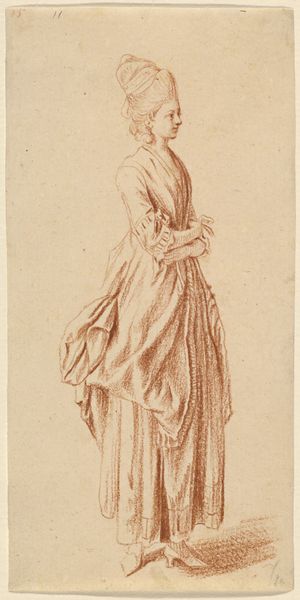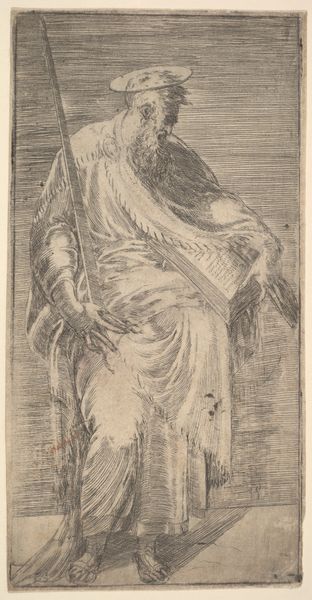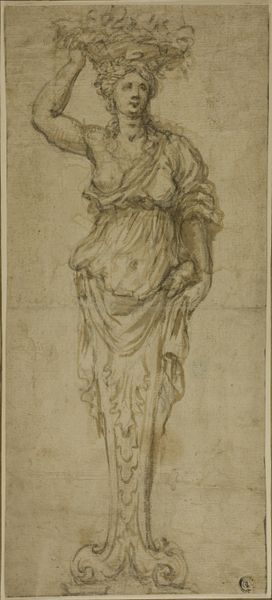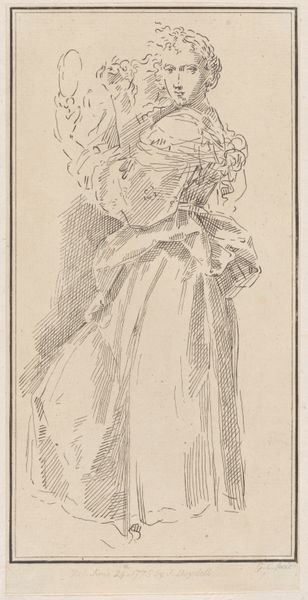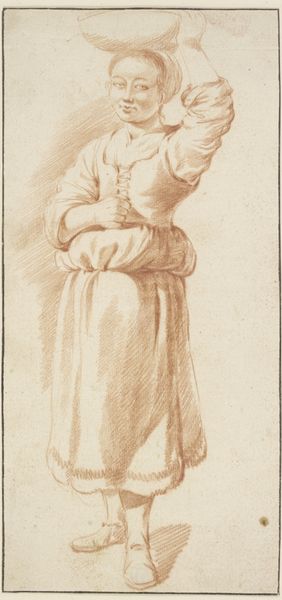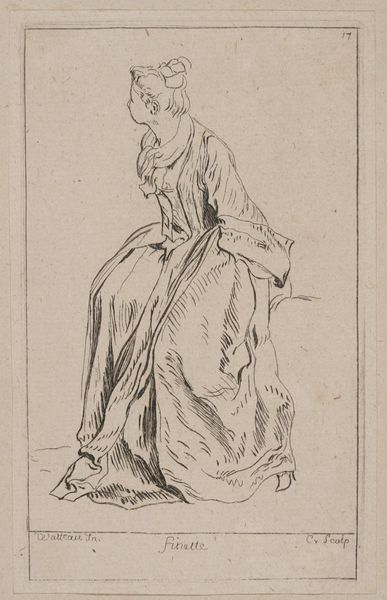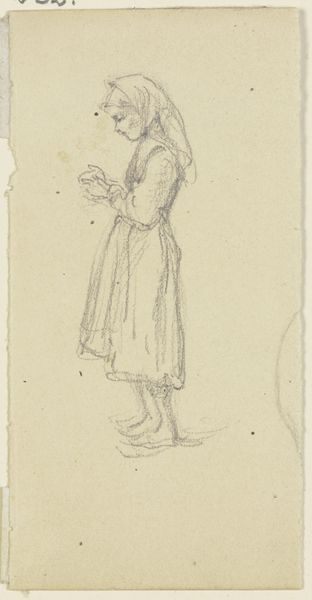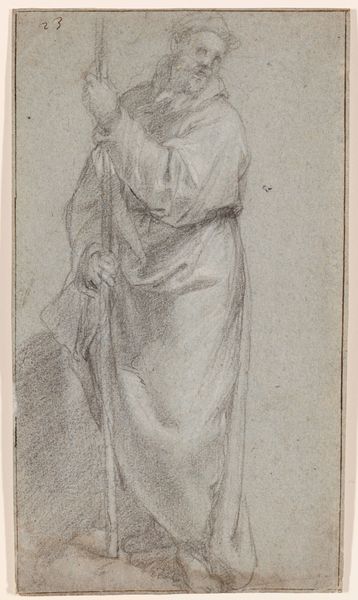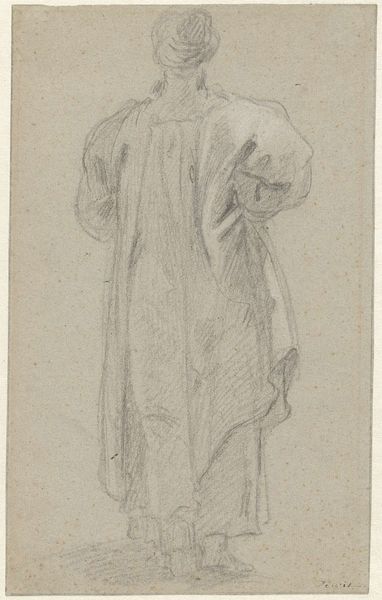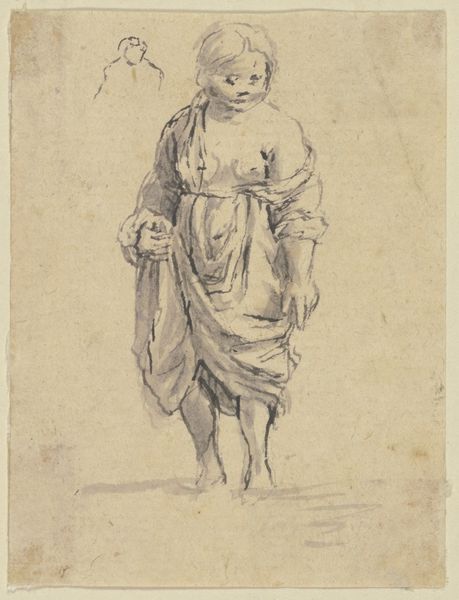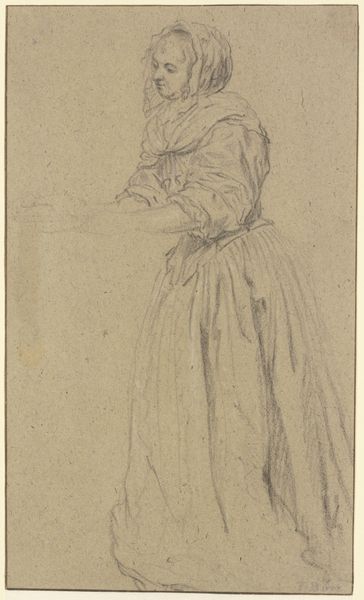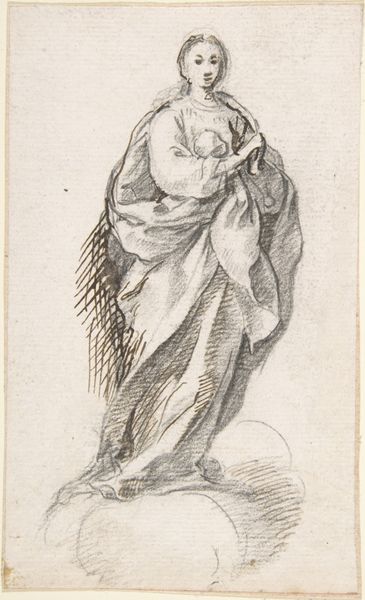
drawing, pencil
#
portrait
#
drawing
#
dutch-golden-age
#
figuration
#
pencil
#
genre-painting
#
academic-art
#
realism
Dimensions: 4 7/8 x 3 1/4 in. (12.4 x 8.3 cm)
Copyright: Public Domain
Curator: Here we have Jan van Goyen's "Standing Woman," a pencil drawing that dates from between 1616 and 1656. It resides here at The Metropolitan Museum of Art. Editor: It’s quite striking how much expression he conveys with so few lines. The fabric of her dress, you can almost feel the weight of it despite the spareness of the sketch. Curator: Precisely. Van Goyen was a prolific landscape artist. But this drawing shows us his mastery of capturing everyday life too, a sort of genre painting. The "Standing Woman," likely a study for a larger composition, tells us much about the culture of the Dutch Golden Age. The way she is standing is typical for female figure. Editor: What I find interesting is the materiality. You can see the paper, feel the pressure of the pencil. It brings the act of creation to the forefront. He isn't trying to hide the means of production, so to speak, but rather invites us to consider his choices as he translated life into art. Curator: That immediacy is key, I think. Drawings like this provide a rare glimpse into the artistic process behind more formal works. We often think of these Dutch masters in the context of portraiture and large public and private comissions, but here the artist allows a brief encounter with the commoners of the time. Editor: It also highlights the social stratification. Her clothes indicate a particular economic status and would shape her experience and the types of labor available to her, a part of everyday economics of dress in this time period. Curator: And don't forget that art academies influenced taste. Note the naturalism but also an idealized representation of the female figure. Van Goyen manages to both observe reality and fit into aesthetic norms. Editor: Thinking about the drawing itself as a commodity, available now for our consumption in a museum setting changes my viewing experience a bit. Curator: Indeed. It reminds us that art, even sketches like this one, participate in a market, with fluctuating values. It adds a crucial historical perspective. Editor: Well, I definitely see more in the work now. Thanks for the illumination. Curator: My pleasure. I will always consider art with respect to the social and economic factors that impact artistic choices.
Comments
No comments
Be the first to comment and join the conversation on the ultimate creative platform.


